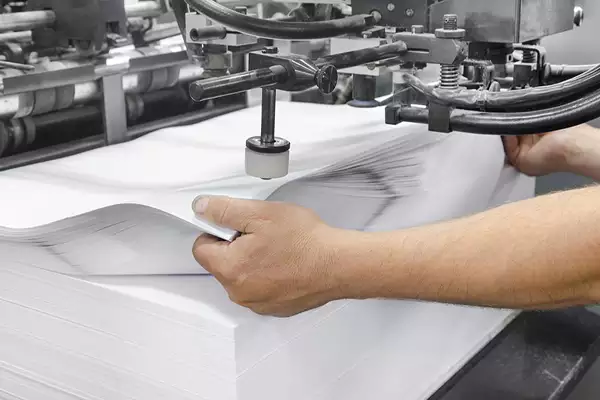What are the operational considerations for RTO in the printing industry?
Introduction
The printing industry is an ever-evolving industry that requires a lot of energy to operate. The industry needs to comply with environmental regulations on the emission of pollutants into the atmosphere. One of the most effective ways of mitigating air pollution in the printing industry is through the use of regenerative thermal oxidizers (RTOs). An RTO is an equipment that uses high temperatures to eliminate pollutants from industrial exhaust gases. The following are operational considerations for RTO in the printing industry.
Design and Capacity
One of the primary operational considerations for RTO in the printing industry is the design and capacity of the RTO. The design should be tailored to meet the specific needs of a printing facility. The capacity of the RTO should be sufficient to handle the volume of the emissions generated by the printing machines. Additionally, the RTO design should factor in the types of inks and substrates used by the printing facility. This ensures that the RTO is effective in eliminating the pollutants emitted from the printing process.
Energy Efficiency
The energy efficiency of the RTO is another operational consideration for the printing industry. The RTO should be designed to minimize energy consumption, which helps the printing facility reduce energy costs. The RTO should also be equipped with a heat recovery system that captures the heat generated during the combustion process. The recovered heat can be used to preheat incoming exhaust gases, which reduces the energy required to maintain the RTO¡¯s operating temperature.
Condition Monitoring and Maintenance
Condition monitoring and maintenance are important operational considerations for RTO in the printing industry. Regular maintenance ensures that the RTO operates at peak efficiency. The maintenance schedule should include periodic checks to ensure that the RTO is operating within the required parameters. Any abnormalities should be addressed immediately to prevent significant equipment damage. Condition monitoring helps identify any potential issues before they escalate and cause significant downtime.
Compliance
Compliance with environmental regulations is an essential operational consideration for RTO in the printing industry. The printing facility must ensure that the RTO meets the required local and federal regulations. Compliance with regulations regarding air pollution helps avoid legal issues and costly fines. The RTO should also be equipped with a monitoring system that tracks the emissions from the printing process and ensures the facility is within compliance.
Conclusion
In conclusion, regenerative thermal oxidizers are an effective way of mitigating air pollution in the printing industry. The operational considerations for RTO in the printing industry include design and capacity, energy efficiency, condition monitoring and maintenance, and compliance with environmental regulations. A well-designed and maintained RTO helps the printing facility to minimize energy costs, comply with environmental regulations, and reduce the impact of the printing operations on the environment.


Operational Considerations for Regenerative Thermal Oxidizers in the Printing Industry
Our company is a high-end equipment manufacturer that specializes in comprehensive treatment of volatile organic compounds (VOCs) waste gas and carbon reduction energy-saving technology. With core technologies in thermal energy, combustion, sealing, and self-control, we have the ability to simulate temperature fields and airflow fields, as well as test ceramic heat storage material performance, molecular sieve adsorption material selection, and high-temperature incineration and oxidation characteristics of VOCs.
Our team is based in Xi’an and has RTO technology research and development centers and waste gas carbon reduction engineering technology centers. We also have a 30,000©O production base in Yangling, making us the leading manufacturer in terms of RTO equipment and molecular sieve rotary equipment production and sales worldwide. Our core technology team comes from the Aerospace Liquid Rocket Engine Research Institute (Aerospace Sixth Institute), and we currently have more than 360 employees, including more than 60 research and development technical backbones, three senior engineer-level researchers, six senior engineers, and 47 thermodynamics doctors.
Our core products are the rotary valve heat storage oxidation incinerator (RTO) and molecular sieve adsorption and concentration rotary wheel. Combined with our own expertise in environmental protection and thermal energy system engineering technology, we can provide customers with comprehensive solutions for industrial waste gas treatment and carbon reduction energy utilization under various working conditions.
Certifications, Patents, and Honors
Our company has obtained various certifications and qualifications, including the Intellectual Property Management System Certification, Quality Management System Certification, Environmental Management System Certification, Construction Enterprise Qualification, High-tech Enterprise, Rotary Valve Heat Storage Oxidation Furnace Rotary Valve Patent, Rotary Wing Heat Storage Incineration Equipment Patent, and Dish-shaped Molecular Sieve Rotary Wheel Patent, among others.

Choosing the Right RTO Equipment
When selecting RTO equipment, there are several operational considerations that must be taken into account:
- Determine waste gas characteristics
- Understand local regulations for emission standards
- Vyhodnoťte energetickou účinnost
- Zvažte provoz a údržbu
- Analyze budget and costs
- Select the appropriate RTO type
- Consider environmental and safety considerations
- Perform performance testing and verification
It is important to thoroughly explain each of these considerations when selecting RTO equipment for your specific needs.

Service Process
Our service process includes:
- Initial consultation, on-site inspection, and needs analysis
- Plan design, simulation and review
- Custom production, quality control, and factory testing
- On-site installation, commissioning operation, and training services
- Pravidelná údržba, technická podpora a dodávky náhradních dílů
We provide a one-stop solution with a professional team to tailor RTO solutions to meet our customers’ individual needs.
Autor: Miya
